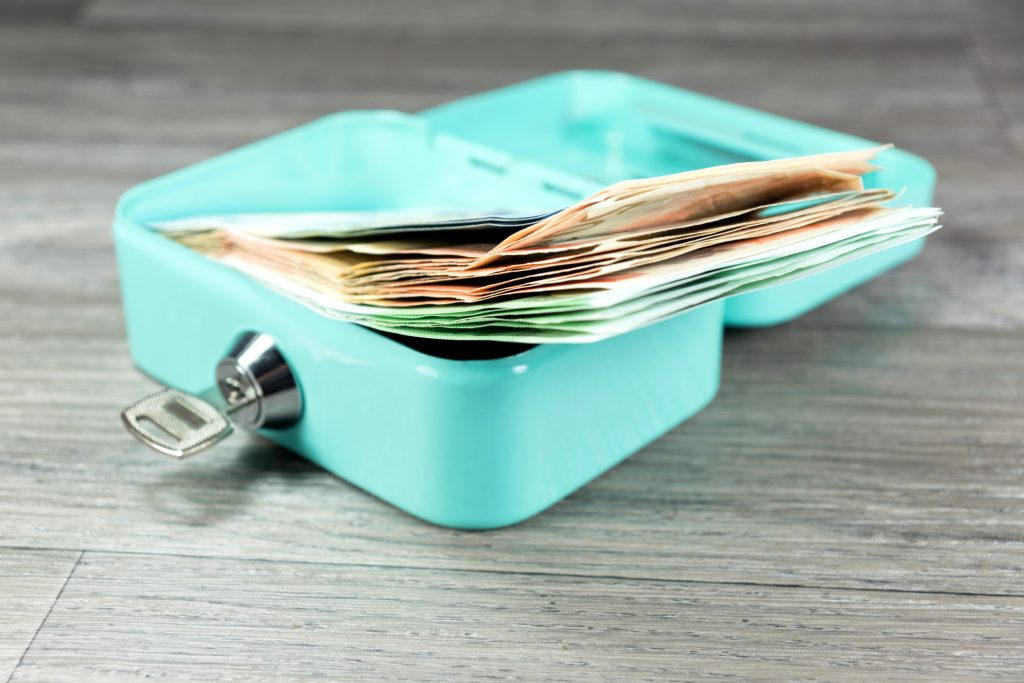Petty cash, also known as petty cash fund, is a small amount of cash on hand that is used for paying small, everyday business expenses. Examples of petty cash use includes payment for postage, phone cards, and reimbursing travel expenses. The amount in a petty cash fund will vary by organization – how much is held, and how the petty cash is used are determined by the managers of the business.
Petty cash requires control
Petty cash is intended for small payments, but in many businesses, petty cash becomes the primary fund for making cash payments.Many Ghanaian businesses have weak controls over petty cash. They assume that because it’s a small amount of money, they do not need to pay attention to controls over how it is spent.
Businesses have lost significant amounts of money over time because of a lack of control over petty cash spending. Weak controls over cash in an environment where employees are often hard pressed for cash creates a tempting opportunity for embezzlement and fraud. Having strong controls over petty cash is the surest way to deter potential criminals from embezzling petty cash.
Seven simple steps to improve controls over petty cash
The seven simple steps you must take to strengthen controls over petty cash and avoid losses are:
1. Decide on a float and when to replenish
The first step is to define how much you would like to keep as a float in the petty cash, and the level at which petty cash must be replenished. The float is the maximum amount that can be held in petty cash at any time. The amount disbursed from the petty cash should be reimbursed when the fund falls to the level at which it must be replenished.
To determine the amount of the float, consider the typical small payments you make within a defined period such as a week or month and set a reasonable float amount. The float reduces the risk of holding too much cash that you may not require, or indeed too little cash.
2. Segregation of roles
In a small company, it may not be possible to have different people responsible for the petty cash funds, keeping the petty cash accounts and approving petty cash payment. As a minimum, the person who approves petty cash should not keep the petty cash and the related accounts.
3. Define the expense limit and approval matrix
It is very important to define:
- The maximum amount that can be disbursed out of petty cash. Payments that exceed the limit should not be paid out of petty cash. For example, amount not exceeding GHS 100.
- Who can approve petty cash transactions?
4. Use petty cash vouchers for all petty cash transactions
Create a system for petty cash disbursement. In this system, petty cash requests should be recorded on a petty cash voucher and approved by an authorized person before disbursement.
5. Demand receipts to back up the expenses claimed
The petty cash disbursement policy must make it mandatory for petty cash claims to be backed by receipts. In a few cases, e.g. taxi rides, receipts may not be available. In such cases the person approving should assess the reasonableness of the expenditure.
6. Review and approval of petty cash reimbursement request
To request reimbursement, the petty cash holder must submit all petty cash vouchers together with the relevant supporting documents. The person approving the request should ensure the following:
- Scrutinize the vouchers, checking that the amounts on the vouchers and receipts agree.
- The supporting documents have been stamped “paid” so they cannot be used to support other payments.
- Total up the amounts on the vouchers and ensure that the total calculated agrees with the reimbursement sought.
7. Periodic cash counts
The petty cash on hand must be counted periodically, and the cash counted reconciled to the balance on the petty cash account. The petty cash count is a means of verifying that cash balance exists.
For the cash count to serve as an effective control:
- The count should be carried out by someone independent of the petty cash custodian and the person who keeps the petty cash account.
- The petty cash and the supporting documents should be available at the time of the count.
To check whether the correct amount of petty cash is on hand, the person carrying out the count should do a reconciliation as follows:
- Obtain all the petty cash vouchers that have not been reimbursed.
- Check that the vouchers are in order and calculate the total amount disbursed.
- Deduct the amount from the float to get the balance that should be on hand.
- Agree the balance calculated to the cash on hand.
In Summary
Since a lot of business dealings in Ghana involve cash, the amount of money passing through petty cash can be significant. You can lose a tidy sum over time if your controls are inadequate.
The above suggestions can help you establish control and reduce the risk of theft.
Written by Amos Adu
Amos is the manager of Client Accounting Services in SCG.
Contact us today to speak with one of our team of experts.

